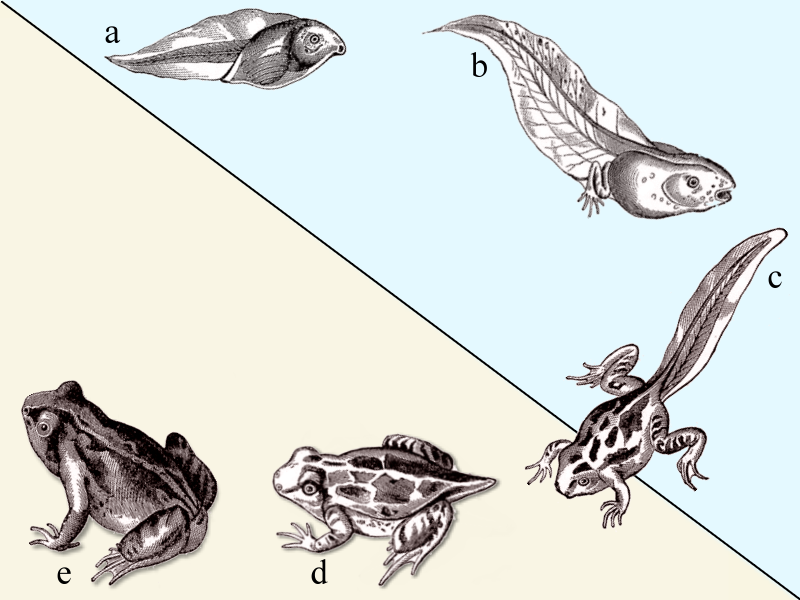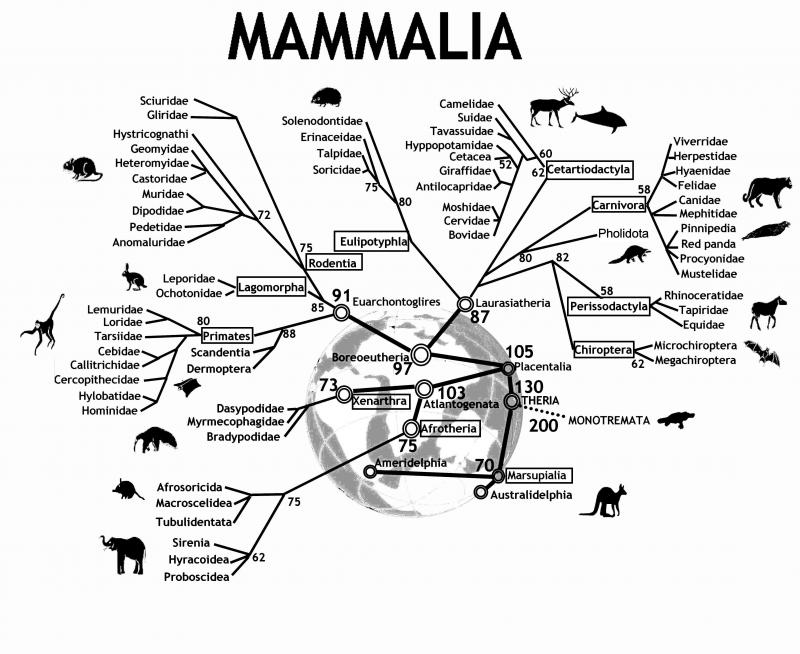Quick! What’s the definition of “evolution”? Don’t think, just answer! Got it? Okay. Did you say, “change over time”? I bet that most of you did. It’s the classic, benign definition. But the problem is that it can feed into a classic, not-so-benign, misconception. Which one? This one:
Misconception: Individuals evolve over their lifetimes.
Correction: Populations evolve over generations.
The problem with “change over time” is that it conflates the biological definition  of "evolution” with the common usage. Is there any living thing that doesn’t change over time? Goodness knows, humans change over their lifetimes in everything from appearance to musical taste (right? I mean, I won’t have to listen to Disney princess songs with my children 24/7 forever, right? Right?). And various of our cousins change even more over their lifetimes: consider the transitions from tadpole to toad, caterpillar to butterfly, or acorn to oak.
of "evolution” with the common usage. Is there any living thing that doesn’t change over time? Goodness knows, humans change over their lifetimes in everything from appearance to musical taste (right? I mean, I won’t have to listen to Disney princess songs with my children 24/7 forever, right? Right?). And various of our cousins change even more over their lifetimes: consider the transitions from tadpole to toad, caterpillar to butterfly, or acorn to oak.
Biologists have special terms for the changes that occur to living things over the course of their individual lifetimes —ontogeny, development, metamorphosis, and senescence, to name a few. But when biologists talk about evolution, these aren’t the types of changes they’re referring to. So what, then, is evolution in the biological sense of the word? The simplest way to define it: descent with modification.
But Stephanie, you ask, isn’t that just a fancy way of saying “change over time?” True, modification means change and descent implies time…but not a lifetime. Descent implies at least two lifetimes, that of the parent generation and that of the offspring generation. Typically, changes that occur within a species from one generation to the next are considered examples of microevolution, while changes that occur above the species level are examples of macroevolution. So let’s see if we have it straight so far:
A child finally loses her taste for Disney princesses and starts to eat vegetables. Change over time, but not over generations: not evolution, but individual development.
The frequency of genes for antibiotic resistance in a population of bacteria increases after exposure to penicillin. Change over time, and over generations: evolution, and indeed microevolution (within a species).
A group of four-legged mammals differentiates into many different mammal groups, from whales to bats to armadillos, over 100 million years. Change over time, and over generations: evolution, and indeed macroevolution (above the level of species).
No problem! But how, if you’re a teacher, can you help your students get it straight?
If you’re an educator in the K–8 world, you probably don’t need to introduce the terms “macroevolution” and “microevolution,” but you should differentiate between development and evolution. Understanding cycles is important for this age group—seasonal cycles, life cycles, planetary cycles—so when you teach these concepts, make sure to distinguish them from evolutionary change. Life cycle diagrams do not model evolution; they model growth and development. Similarly, evolutionary trees do not show how individuals changed over their lifetimes; they show how groups of organisms have changed over long periods. Young learners can grasp that difference.
In high school, educators should be vigilant for this misconception, and it can be hard to catch. For example, suppose that a test question asks: “A population of beetles have a light and a dark form. A change in the ground cover makes the light beetles easier for birds to catch and eat. How will the population likely evolve?” If students replies, “They will all evolve a dark color to avoid the birds,” do they have only the misconception that traits evolve for a purpose, or do they also think that the change in color can take place over an individual beetle’s lifetime? It’s difficult to know without following up—but it’d be worth doing. Better, to help to obviate this kind of time-consuming probing, constantly ask students “evolution or something else?” during the course of the year. Trees lose their leaves—evolution or something else? Male pattern baldness—evolution or something else? Changes in peppered moths—evolution or something else?
That last example is important not just because it is indeed evolution, but because those changes happened so fast and the story of the moths is so clear that it actually often feeds into this misconception, despite its being a classic example of microevolution. I bet that if you polled your students after going through it, many of them would agree with this statement: “When the pollution set in, the light-colored moths turned dark.” Nope. They didn’t. The light-colored moths stayed light—but a lot of them got eaten before they could reproduce and have light-colored offspring. Thus, in the next generation, more of the moths in the population were dark. This is a huge difference. Make sure that your students get it. One way to do so is to use a simulation showing natural selection at work over many generations. There are lots of good examples out there, such as this one from the AAAS. Activities like this can help to reinforce that evolutionary changes happen from generation to generation, not within a single generation.
This misconception is so common and so prevalent that constant vigilance is called for. It’s not enough to say that no one is an (evolutionary) island and suppose that you’re done—or Donne.

